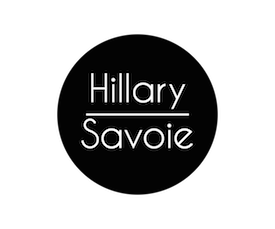The hospital dietician looks at me surprised, a vague air of concern crossing her face. She’s been called in because the nurse didn’t understand my answer to his question about what Esmé eats.
“Esmé gets a blenderized diet through her g-tube.” I say, slowly. This isn’t my first rodeo, and I know what’s coming.
“You mean hypoallergenic formula?” Skeptically…
“No, she’s allergic to the elemental formulas. She gets a blenderized diet. You know, regular food, just blended.”
“Ok. But, what’s in it?” Yeah, now she’s clearly nervous.
This is the point at which I get annoyed. I want to say “Food. Food is what’s in it.” I want to ask if she asks every parent what they feed their child or just those of us who feed our kids through a tube. I want to ask if she understands how much time my husband and I spend obsessing over establishing the perfect balance of nutrients…and if we could talk about something substantive instead. Really, I sort of want to ask her to leave, but I know that this might be helpful if I can hang on a bit longer.
Instead I look her square in the face and say, deadpan: “We blend a mixture of Oreos, Doritos, and Happy Meals, that should be ok right?”
Because most three year olds have consumed those things. Mine hasn’t. My child eats a textbook healthy diet: good fats, organic foods, lots of veggies, no sugar…balanced beautifully–for her–everyday.
Now that I have passive-aggressively made my point, I say, “I have a spreadsheet outlining her diet and all of the nutritional components. Would you like me to email it to you so you can review it?”
“Yes, I will look it over and we can talk in a bit about it.”
An hour later she is back, “This is actually very good, can we discuss a few items in more detail?”
Now I know we’ve reached the point where we might get somewhere…where I might be able to gather some more information about how best to fine-tune her diet and keep Ez healthy.
I know the dietician didn’t mean any harm. She probably had no idea that I am the sort of compulsive and nerdy mom that keeps excel spreadsheets monitoring not only Esmé’s nutrition, but also her seizures, meds, input and output. (Although, had she read our chart it would likely have been clear).
Here’s the thing, though, having a child who is medically fragile and developmentally delayed involves letting people into all aspects of your parenting. My interactions with Esmé have been obsessively monitored and analyzed almost from the first time I held her. And it gets exhausting…nowhere more so than with regard to her food.
Because it still feels like an assault on my very ability to care for my child–to nourish her properly and safely.
And I get it, my daughter is tiny–like below the first percentile tiny. And she’s medically fragile. She obviously needs optimal nutrition…but she is, first and foremost, my daughter. Feeding her properly is one of the most fundamental things I can do to care for her…and over three years of having our feeding choices questioned by people who do not understand the whole picture has just worn me down.
It seems that at some point everyone has had an opinion. But it is rare that someone can actually grasp all of the elements that come into play regarding how we feed Esmé and why we feed her the way we do. The tube part is easy–she was aspirating her food, likely since birth. She developed severe aspiration pneumonia and had cardiorespiratory arrest as a result. There was no choice but to use a feeding tube for Esmé.
It saved her life, plain and simple.
Where it gets more complicated is when we discuss what goes into her tube. The majority of children with feeding tubes are fed some form of commercial formula–in our case originally it was a prescription hypo-allergenic elemental formula. I have nothing but gratitude that these life-sustaining formulas exist…they keep so many children healthy and alive. But they are absolutely not the answer for every child with a feeding tube. In Esmé’s case, these formulas make her ill, causing terrible vomiting, retching, and unhealthy weigh gain. Unfortunately, no one could have predicted this–and by the time we had sorted it out I no longer had my stockpile of frozen breast milk. So we started looking for alternatives and found that a number of people who are tube-fed eat a blenderized diet. Blenderized diets can include almost any food you can think of–just blended up so that it can pass through the tiny opening in Esmé’s feeding tube.
When we started giving Esmé puréed fruit in her formula as a trial, we immediately noticed a change in her demeanor, frequency of vomiting/reflux, and strength. When brought our findings to our (then) new gastroenterologist at Boston Children’s, I was worried we would be told that we weren’t allowed to do this. That it was a bad idea. And that we should go back to status quo.
However, fortunately for us, our doctor not only saw the change we saw in Esmé, but she had experience with blenderized diets and she was completely supportive–helping us find resources on how to approach Ezzy’s diet, encouraging us to experiment with mixing in new foods that Ez might be eating by mouth if she was developing typically, brainstorming with us.
But more than that, she was the first doctor who helped us feel as though WE were driving Esmé’s nutrition, that we were the experts in Esmé and that the doctor’s job was to support us. She handed us back control over what went into our child’s body. She helped us feel like Esmé’s parents, rather than medical assistants carrying out doctor’s orders.
And, thankfully, it was a fantastic answer for Esmé’s overall health and well-being.
We love making Esmé’s food. It feels like such a basic and caring thing that we can do for her. We wouldn’t do it if she was healthier on formula. But since she is thriving in this way, we truly relish in it, mixing it up every night with love, monitoring how changes affect her.
I’m actually sort of jealous of Esmé’s diet. It’s filled with high quality veggies, meat, oils, grains, and in pretty astounding variety…
And, who knows, maybe an Oreo or two…
I originally wrote this post for Elyn Zimmerman’s blog The Nutritionist’s Dilemma, which discusses the realities of eaters and eating in the modern world. She says of her writing, “I am committed to helping mere mortals with the colossal task of developing a peaceful relationship with food and eating…I blog about the conundrums that confound this experience– in hopes of helping others to be kinder and gentler with themselves.” Please take a moment to check out her musings!


This is precisely our story, thank you so much for sharing.
My son was tubed at 12 for lack of nutrition and immediately after he began chemical made formulas a smell began. At first I chalked it up to hormones and his age but then began seizures.
After fighting with the GI Dr for nearly a year Noah finally began gaining almost 20 lbs by whole natural foods.
Every visit they try to get us to start a new formula even though he is steadily gaining .5 oz or more a day.
They know now I will not be budging. There is no coincidence that every time they try to start Noah on chemically made formulas he gets Ill. It is obvious his body cannot handle those types of foods now because he is getting such better foods and vitamins that come naturally from food.
It works and we went through almost five formulas. I say almost because the last one was thrown out the day it came..
The blended diet was the only thing that saved Noah and I am so glad other families are doing it too.
Hi! I'm a teacher at a school for medically fragile/severely disabled students in the Boston area. Most of my students are g-tube fed and I always wonder if some of the GI issues, pain, retching, constipation and other problems I have seen in some students are caused not by their overall diagnosis but by being fed chemical formulas. Our school nurse recalls a time when tube fed children were only fed real blenderized food thinned with milk, and that was because there was no other option. I feel once chemical formulas were made, companies realized the big money they could make on them, and like any ready made item, they realized the convenience would make them appealing to families of complex children. However, just like with the change in feelings about processed and packaged foods and a move by many to not eat them… there will probably be change in this type of 'eating' too! I believe parents, and those in the medical field will begin to think differently about all this, and a turn back towards real food for tube feeders may become more common. Why are we 'feeding' our kids this 'food' with so many chemicals one can't even pronounce! If they could eat by mouth would they be eating that way? No way! I think you are just at the forefront of this change, and others will hopefully follow!!
Our gal had a tube and blenderized food until she starting eating orally at 9. Best thing we ever did! Great for her and when she did begin to eat her body was used to processing every fruit vegetable meat etc. Well done Mom!
You know, food…just food that's been in a blender.
Ahhhh
My daughter has an ng right now and the formula is horrible for her… She is so constipated and has dark circles under her eyes, which she totally didn't before she developed an oral aversion and ate real food by mouth. I can't wait until we get a gtube and I can give her real food again… She needs it so badly!